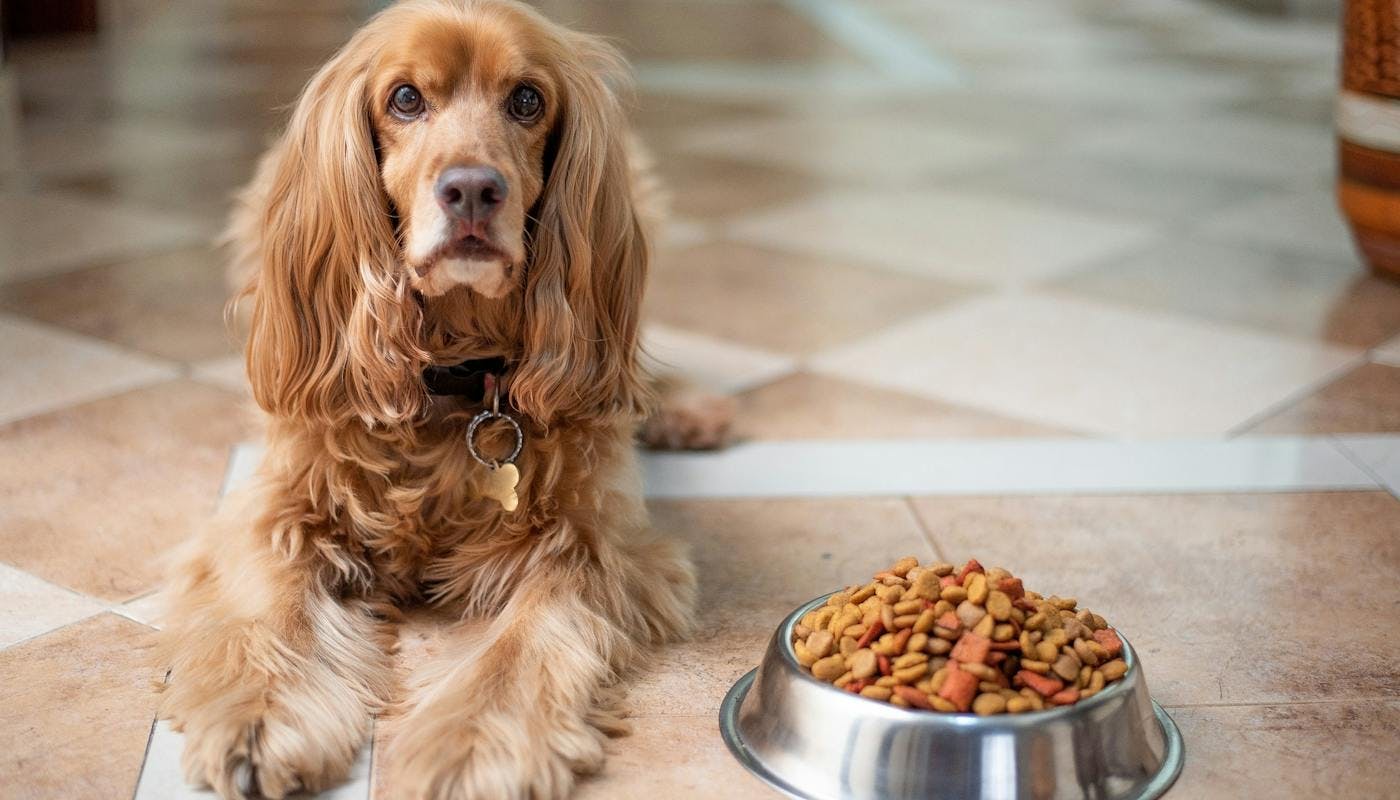How To Keep a Hungry Dog at a Healthy Weight
Is your dog on a new regime (and unhappy about it)? We’ve been through just the same thing. Here are some ideas to support your dog while they reach their ideal weight…
Why a Healthy Weight is Important
It’s just a number… but it’s also a risk. Dogs who are overweight by even 10% have a higher risk of developing diabetes, heart disease or arthritis/learn/dog-food/how-to-choose-a-complete-and-balanced-food-for-your. As our dogs don’t decide on their own meals, it’s our responsibility to help them eat sensibly and live their best lives.
Why Is My Dog Always Hungry?
Searching for food is a natural instinct. Some dogs just don’t experience satiation – they don’t feel full enough – so they will rarely or never stop looking for food. Certain breeds are renowned for this trait. Labradors, Beagles, Cocker Spaniels, Pugs and Retrievers are all known as insatiable scroungers!
On the other hand, sometimes this behavior is learned. A soft-hearted owner carries their plate to the kitchen and scrapes leftovers into the dog’s bowl – and the routine begins. It’s not always a kindness to give your dog the food left on your plate, especially in a large family.
If you’ve reduced their daily volume of food and your dog is struggling with hunger, here are some ideas to help them through:
#1 Increase their Exercise
Research shows that overweight dogs are usually not getting enough exercise. You can help them to meet their weight goals by adding a few extra minutes to every walk. Explore a new route or take a ball with you to extend their exercise and tire them out. Back home, a sleepy dog won’t be thinking so hard about their stomach.
#2 Stock Up On High-fiber Snacks
Treats are banned, but it’s impossible to refuse a hungry dog. So what can we do? Keep a supply of healthy snacks which are low in calories and high in fiber. You can even add cooked vegetables to your dog’s bowl to increase the volume of food. Try a few and find out which your dog likes best:
- Carrots (raw or steamed)
- Cucumber chunks
- Sliced apples (be aware that fruit will have more natural sugars compared to vegetables)
- Steamed broccoli
- Green beans (raw or steamed).
#3 Vary their Diet
If your dog is bored with dry kibble, they might ignore it in favor of foraging at the table. Have you tried cooking supper for your dog? It makes a good occasional treat. Mix steamed chicken, turkey, or fish with baked sweet potato, boiled brown rice and boiled green beans. Fork everything together and cool slightly before dishing up a portion for your dog (saving some for another day). There’s a good base recipe here.https://www.allrecipes.com/recipe/140286/homemade-dog-food/ (Note that homemade recipes don’t contain the full range of nutrients that your dog needs. Unless you’re a nutritionist, it’s best to stick with a professional blend most of the time.)
#4 Space Out or Scatter Meals
To help your dog manage their hunger, try spacing out their mealtimes – using the correct daily volume of food/learn/dog-health/how-to-help-my-dog-lose-weight-diet-and-exercise-for, but dividing it into smaller portions which you can feed through the day.
There are other techniques you can use to slow them down and help them enjoy their food. Put some of their kibble into a treat ball (like a Kong) for entertainment./learn/dog-training/how-to-use-dinner-time-for-dog-training At meal time, you can try a snuffle mat or slow-feed bowl to encourage them to eat more slowly. Or try the free option – scatter their kibble outside in the yard so they wander around finding it. (A good activity for dogs who get bored.)
Further Reading
If your dog has suddenly developed a large appetite, it can be a symptom of an underlying health issue. Check with your vet to rule out conditions such as Cushing’s Disease/learn/dog-health/cushings-disease-in-dogs-the-symptoms and diabetes/learn/dog-health/diabetes-in-dogs.
Read more about choosing the right diet for your dog/learn/dog-food/how-to-choose-a-complete-and-balanced-food-for-your.
